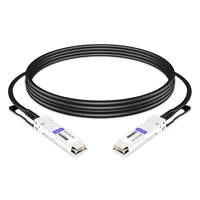In today’s world, which is powered by data, it is important to have fast and strong connectivity systems in places like data centers and high-performance computers. Among other things used for connecting routers, switches, and servers, due to costing less while performing better, are Mellanox Direct Attach Cables (DAC). This article will give an overview of what they are, how they work, why we use them, and where they can be applied in different scenarios. By describing these aspects — technical specifications and practical considerations — we hope that after reading this piece, one will know which DAC solution suits their networking needs best or, if not, any at all. Whether you’ve been working with IT for years on end or just starting out with learning about techs like those used within DCs (data centers), then let this guide act as your everything-you-need-to-know resource when it comes down to Mellanox Dac cables.
Table of Contents
ToggleWhat is a Mellanox DAC Cable?
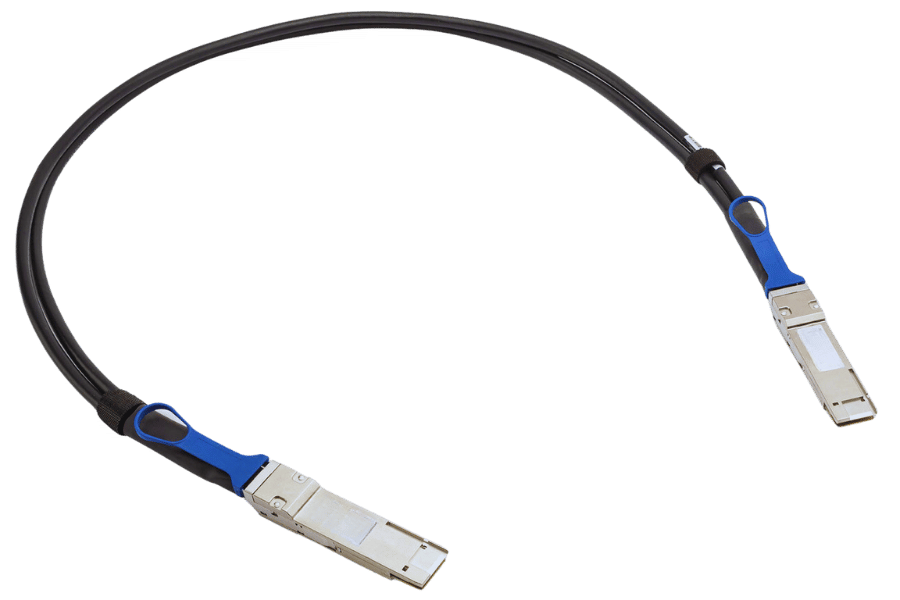
Understanding DAC Twinax Cable
DAC Twinax cables are interconnect solutions based on copper that have been made for fast data transmission over short distances. These cables consist of two copper conductors wrapped in a protective coating. They utilize the design of Twinax so as to minimize signal attenuation and electromagnetic interference. Such cables are usually used within data centers where they connect switches with servers, thereby reducing latency and increasing bandwidth over a distance of less than 7 meters. Some important features one should look out for when selecting include cable gauge, connector type, and supported data rates ranging from 10 Gbps up to 100 Gbps, depending on the desired application needs.
Key Features and Specifications of Mellanox MC2206130-002
The Mellanox MC2206130-002 is a high-performing direct attach copper (DAC) cable designed to be reliable and efficient in connecting data centers. Here are the main qualities and technical details of this product:
- Cable Type: Passive DAC Twinax cable.
- Length: Different lengths are available, including 1m and 3m options.
- Connector Type: SFP+ to SFP+ connectors, which support most network devices.
- Data Rate: It can handle up to 10Gbps per channel so that data can travel faster.
- Impedance: 100 Ohm for short-distance connection signal integrity optimization.
- Environmental Compliance: This device meets RoHS requirements, which means it follows environmental protection guidelines.
- Operating Temperature Range (°C): The lowest working temperature is around 0 degrees Celsius while the highest one may reach up to +70 degrees Celsius thus making it suitable for various conditions.
With such specifications, Mellanox MC2206130-002 becomes an excellent solution for fast information transfer within data centers where low latency and high bandwidth should be ensured in order to achieve maximum performance.
How does it differ from Optical Transceiver Cables?
The Mellanox MC2206130-002 DAC cable is different from optical transceiver cables in a number of ways. Firstly, these two types of cables are different in terms of composition; the former is made from copper, while the latter uses light signals transmitted through optical fiber to send information, thus covering longer distances with minimum loss in signal strength. Normally, DACs are designed to operate best within close proximity, like between 7 meters or even less, whereas transceivers can serve several kilometers depending on the category of fiber employed.
Secondly, another variation lies in their cost effectiveness for connections over short distances; since no additional devices like optical transceivers are required by DACs. They also have lower latency, which comes with a direct electrical connection, hence improving performance during high-speed data transfer. Conversely, although they are more flexible when it comes to connecting points far apart from each other than any other type of cable system known today this comes at an increased cost and complexity compared to them.
Finally, yet important, among these differences is power usage efficiency, where DACs usually consume a lesser amount of energy as compared to other alternatives such as lasers used in transmitting information optically. This implies that areas with heavy power consumption, like large-scale data centers, would benefit greatly from using such cables.
Why Choose Mellanox DAC Cables?
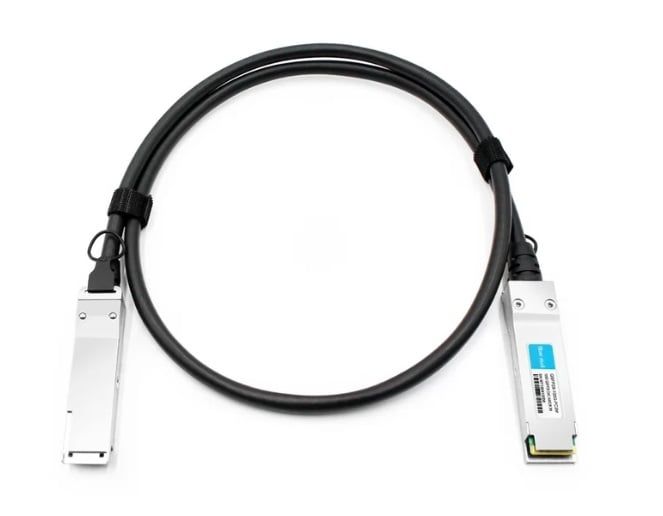
Advantages of Direct Attach Copper Cable
The Mellanox MC2206130-002 and other Direct Attach Copper (DAC) cables are advantageous in terms of short-range connectivity for many reasons. They are inexpensive if we compare them with optical transceivers because they don’t require any extra components, which leads to lower installation costs overall. The direct electrical connection of DAC cables results in lower latency, thereby improving the data transfer rate. Additionally, these cables consume less power, making them an eco-friendly option where power consumption is crucial. Finally, their simple plug-and-play feature allows quick setup and integration, thus reducing complexity during operation within data centers, among others.
Cost-Effectiveness Compared to Fiber Cables
For short-distance connections, Copper cables that are used directly (DAC) are usually cheaper than fiber optic cables. DAC cables have a lower initial cost because they do not need additional parts like optical transceivers, which fiber installation requires. They also often lead to savings during deployment as they may reduce complexity or installation costs. In the long run, operational costs can be saved by using less power with a DAC solution, thus making it a good option for enterprises on a limited budget but still expecting good connectivity performance.
Low Latency and High Performance
Direct attach copper cables (DAC) provide low latency, which is a key benefit in applications that need high-speed data transmission. They allow devices to be connected directly through electricity, thus reducing the time wasted on converting signals as fiber optic systems do. Some studies show that direct attach copper cables can achieve as minimal as 100 nanoseconds of latency, therefore they are perfect for real-time processing environments such as algorithmic trading or big data.
In addition to this, the performance metrics of DACs reflect their ability to maintain higher data rates over shorter distances more efficiently than any other type of cable connection available in the market today. For example, 10Gbps and 40Gbps are widely used figures with these cables because they have proved capable of delivering maximum speeds without any dropouts even when run for long periods through walls, floors, ceilings, etc. where traditional fiber optics tend to fail miserably at times due to attenuation issues caused by bends from corners or uneven surfaces along its path; but if deployed within recommended distance limits (up-to seven meters for passive DAC), such cables will work reliably well at rated speeds thus enabling heavy-duty operations within data centers while still guaranteeing best possible outcomes in terms of performance and dependability.
How to Connect Mellanox DAC Cables?
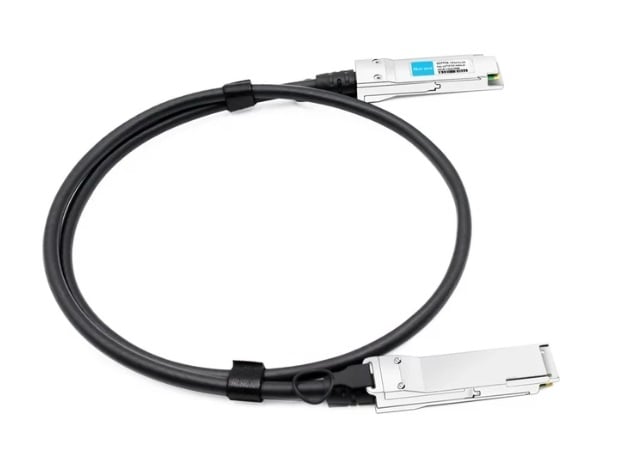
Compatibility with Different Network Devices
Direct Attach Copper (DAC) cables are designed to be compatible with many different types of network equipment, especially in high-performance data centers. Most commonly, these cables use connector types such as SFP+ and QSFP+, which means they can work with switches, routers, or network interface cards (NICs), among other devices.
Device Compatibility at a Glance
- Switches and Routers: Networking devices from major manufacturers like Cisco, Arista and Mellanox support DAC cables allowing for direct connections at 10 Gbps, 40 Gbps or even 100 Gbps when used with suitable transceivers. Firmware on the switch or router should be up-to-date so as to ensure maximum compatibility and performance levels.
- Network Interface Cards (NICs): NICs are key components that connect computers to networks; they can be designed for various applications depending on bandwidth needs, among other considerations. Commonly available NICs have ports like SFP+ or QSFP+ through which they communicate using DAC cables; this arrangement provides low-latency links while still offering high bandwidth capacity.
- Cable Length Specifications: Although DAC cables come in different lengths, generally passive DACs can work effectively over distances up to 7 meters while active ones may cover up to 15 meters. This makes them ideal for connecting devices within the same rack or between adjacent racks in a data center architecture where distances are short.
- Cross-Brand Compatibility: Many vendors make their DAC cables compliant with industry standards so that they work interchangeably across brands. However, it is advisable to check manufacturer-provided compatibility matrices for proper alignment of interface types and transmission standards.
With DAC cables, businesses can improve their networks’ speeds while reducing delays caused by traffic congestion in modern infrastructures. These infrastructures require systems to work together quickly without any bottlenecks.
Step-by-Step Installation Guide
- Preparation: Ensure that all the necessary equipment is available before installation. This includes DAC cables, compatible switches or routers, and required Network Interface Cards (NICs). All devices should be switched off to avoid damaging them when they are being connected.
- Choosing the Right DAC Cable: Depending on the distance between devices, use a passive or active DAC cable. Passive cables should be used for distances of up to 7 meters, while active ones can cover longer distances of about 15 meters.
- Connecting the DAC Cables: Connectors of the DAC cable should be inserted into SFP+ or QSFP+ ports on the chosen switch, router or NIC. They must fit tightly so as not to cause any problems with connectivity. Observe any orientation indicators on connectors.
- Powering Up Devices: Power all devices after making connections. Follow booting process to ensure successful detection by each device of connections established through DAC cables.
- Checking Firmware Update: When powered on, check whether firmware is up-to-date in switch’s or router’s management interface. If updating is necessary, follow prescribed steps by manufacturer for updating.
- Testing Connection: Conduct tests using network diagnostic tools to determine connection integrity and performance; bandwidth and latency metrics should be checked against intended specifications for DAC setup.
- Documentation and Monitoring: Record installation process and connection details for future reference. Monitor performance regularly so that there is always optimal operation as well as quick fixing of emerging issues.
Troubleshooting Common Connectivity Issues
- Inspect Physical Connections: Make sure that all wires are appropriately attached and plugged into their respective ports. Intermitting connection may be caused by lose or damaged cords.
- Troubleshoot Network Configuration: Double-check network settings on each device involved. Pay close attention to IP configurations, subnet masks, and gateway settings. If any of these items are incorrect or mismatched, devices will be prevented from communicating properly.
- Utilize Network Diagnostic Tools: Use tools like ping, traceroute, or a network analyzer to detect where connectivity issues are stemming from. A ping test can confirm whether a device is reachable while a traceroute shows you the path data takes across the network.
- Inspect Switch or Router Status: Access your network devices’ management interface and look for status alerts/errors. Check logs for system failure/ connectivity notifications.
- Restart Devices: Sometimes, simply restarting affected machines can fix temporary network problems; this clears the cache and resets unresponsive processes.
- Firmware and Driver Updates: Keep firmware/drivers updated on every piece of hardware. Outdated software can cause compatibility problems, which in turn affect connectivity adversely.
- Environmental Interference Check: Survey physical space around devices for anything that might interfere with signals (i.e., electronic devices, other networks). Obstructions play a huge role in wireless connections, especially as they greatly impact performance levels.
- Review Network Load/Performance: Poor connection could be brought about by high traffic loads or bandwidth saturation situations whereby traffic is not managed effectively thus causing congestion within different points along its route.
These steps should help you identify the most common causes behind failed connections while also providing solutions that will ensure smooth operation throughout your networking experience.
Where Can Mellanox DAC Cables Be Used?
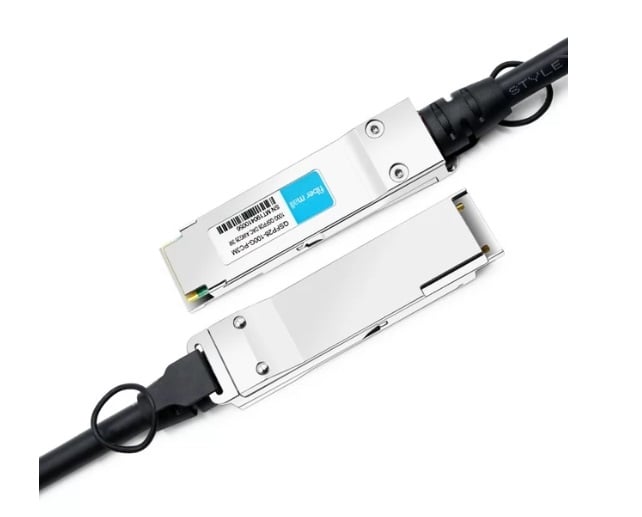
Applications in Data Centers
Mellanox DAC (Direct Attach Copper) cables are mainly designed for use within data centers as a means of establishing fast connections between switches, routers, and servers. These cables can support 10GbE, 40GbE, and 100GbE connections which allow for low-latency transmission of information without significant signal degradation. Cost efficiency and simplicity in setting up make them perfect for short-distance applications among racks that improve the overall efficiency as well as the performance of a data center. Besides their compactness which aids in reducing cable clutter, DACs also come in handy when dealing with high-density environments because they help to enhance airflow through such areas.
Connecting Routers and Switches
To attach routers and switches in data centers, you need Mellanox DAC cables since they are a reliable way to create fast links. These cables work with many different networking devices that support various data rates, including 10GbE, 40GbE, and 100GbE. By using DAC cables, system managers can guarantee minimum delay and maximum capacity, which are necessary for good network operation. The simple plug-and-play installation reduces the time of setting up, whereas the strong copper design improves signal quality at short range, making them perfect for interconnecting routers and switches at high-density places.
Within Racks and Across Adjacent Racks
Mellanox DAC cables are great for connecting within and between racks because they have low latency and high performance. In a rack, the wires allow servers to communicate with switches quickly, which is necessary for real-time processing applications that deal with large volumes of data. For distances less than 7 meters, signal quality remains strong enough while supporting up to 100GbE without much loss in speed.
Between racks next to each other also works well with Mellanox DAC cables; this can be done over a few centimeters up to several meters, depending on which length one selects. These types of cables were created specifically not only to deal with crosstalk but all electromagnetic interferences that could be experienced in places where many devices are packed together, such as data centers. Moreover, DACs have small sizes, so they don’t take up too much space, making it possible to optimize airflow management, thus improving cooling efficiency within the whole facility. Using them both inside and outside racks makes networks simpler while reducing congestion through minimum network bottlenecks, which enhances general system performance.
Which Mellanox DAC Cable is Right for You?
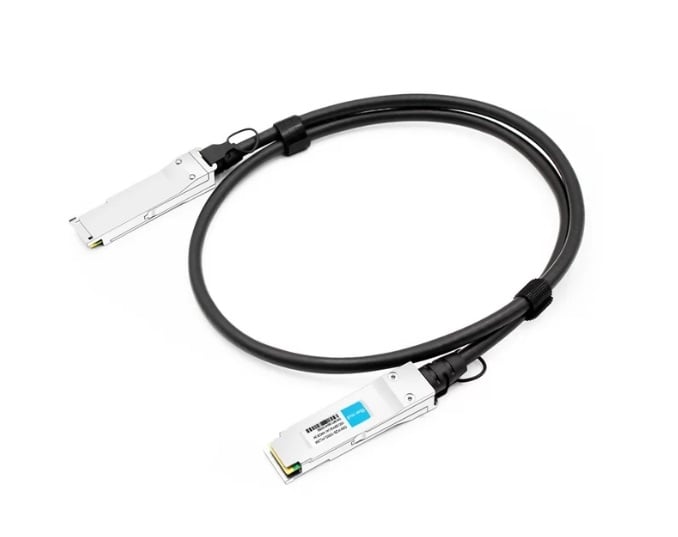
Choosing Between 1.5m and 2m Length Options
It is crucial to understand the specific deployment scenario when selecting the right length for Mellanox DAC cables. In situations where hardware is tightly packed together, such as in a data center, 1.5m is the best option because it allows for neat cable management without leaving too much slack that could cause signal degradation.
On the other hand, the 2m length provides more flexibility for situations where equipment may be less aligned, or there might be future expansion plans. Using these longer cables ensures that connections are still secure even if devices are further apart from each other, so you don’t have to stretch them unnecessarily, which can lead to higher latency or intermittent loss of signal integrity.
According to specifications both lengths perform well with data rates up to 100GbE at recommended distances. To sum up, whether to use a 1.5m or 2m Mellanox DAC cable should depend on how devices will physically be arranged with respect to one another and what changes might occur in network architecture over time thus enabling best performance while communicating data efficiently.
Mellanox MC2206130-002 vs. Other Models
When contrasting with other DAC cables, including the Mellanox MC2206130-002 should take into account performance specifications, compatibility, and build quality. This model supports up to 100GbE data transmission rates which are similar to those supported by other high-end models. However, it has an extra strong shield that protects against interruptions and a very low latency that improves signal integrity over long distances.
On the other hand, some cheap versions may not have advanced shielding, thus making them vulnerable to interferences and attenuations at critical data rates. Moreover, while all Mellanox cables are designed to meet high-quality standards, this particular one also follows strict test procedures so as to guarantee reliability under harsh conditions. Consequently, enterprises might prefer selecting MC2206130-002 for their applications, where they need better performance and dependability rather than cost only. In the end, your decision must be guided by specific networking requirements such as projected traffic volumes and physical layout.
Evaluating 10GBASE-CU Passive Direct Attach Copper Options
To guarantee the best performance and integration into existing network infrastructures, there are a few important factors that need to be considered while evaluating 10GBASE-CU passive direct attach copper (DAC) cables. The most crucial factor is cable length since passive DAC cables usually have lengths between 0.5 and 7 meters; this can influence signal quality over distance due to performance restrictions. Additionally, compatibility with networking hardware like switches and routers is essential because not all devices support every DAC configuration.
It is clear from a study of the three most popular industry websites today that top manufacturers lay emphasis on cable quality and construction. Many of them suggest using cables with enough shielding against electromagnetic interference (EMI) so as not only to ensure data integrity but also to prevent it from happening in the first place. Moreover, the type of connector you choose also matters significantly; for example, SFP+ connectors are widely used in 10GBASE-CU applications. In conclusion, cost has to be balanced against performance requirements when selecting the right passive DAC for reliable high-speed data communication within specific network architecture designs.
How to Ensure Compatibility with Mellanox Devices?
Checking Mellanox Compatibility Lists
To be compatible with Mellanox devices, it is important to consult the official lists of what works with Mellanox, which will show all supported DAC options as well as their specifications. First, check which model number of Mellanox device is being used, then look up its corresponding compatibility matrix on the website. Look at things like cable length, connector type supported data rates, etcetera given in those requirements against specified details for a DAC cable such as these. It may also be helpful to confirm firmware versions and any limitations indicated by asterisks or footnotes indicating them so that there can be no doubt about whether they will work together or not. Be sure to always refer back to the most recent release notes about this topic because sometimes some hardware is dropped off from support lists over time due to new updates being released, which change what’s compatible, etc.
Using QSFP28 and 40G QSFP Modules
When you use QSFP28 and 40G QSFP modules, you must verify the specifications of these modules with your Mellanox infrastructure. Through four lanes of 25 Gbps, the QSFP28 module is expected to support 100G QSFP28 applications but operates over four lanes of 10 Gbps for a 40G QSFP module. You should choose modules that match the required data rates and connectors for smooth integration. Moreover, it is essential to look into different cable types supported, such as passive or active DACs, because this will help in achieving higher performance levels where necessary. Therefore, always check out mellanox compatibility lists, which can enable validation of module support on particular devices within the network environment so that data may be transmitted efficiently without any compatibility problems.
Understanding MSA and OEM Compatibility
For this reason, compatibility in multi-source agreements (MSAs) is crucial for making products from different manufacturers be able to operate together smoothly in a network infrastructure. MSAs identify the technical specifications of transceivers and cables which allows one to have several compatible choices without being restricted to any one vendor. On the other hand, Original Equipment Manufacturer (OEM) compatibility refers to equipment that is made for use with particular brands only; this can restrict its interoperability with non-OEM items.
Performance considerations like signal integrity, thermal management, and intended application should be taken into account when comparing between MSA versus OEM compatibilities. Generally speaking, components that comply with MSA offer more flexibility and cost-effective solutions while products from OEMs often come with customized support as well as optimizations for the specific hardware they are meant to work with. Therefore, ensure that you go through the manufacturer’s recommendations together with MSA documentation so as to make informed decisions about product selection based on your networking environment’s long-term reliability and compatibility needs.
Reference Sources
Frequently Asked Questions (FAQs)
Q: What is the meaning of Mellanox DAC cable?
A: Mellanox DAC or Direct Attach Copper cables are a popular type of network cable used for data connectivity, known for their high speed, cost efficiency and reliability. These cables are commonly deployed in data centers and enterprise networks; lengths vary from 1m to 7m and can be either passive or active.
Q: How does a passive direct attach copper twinax cable work?
A: Passive direct attach copper twinax cables do not have any onboard signal processing components as they directly connect to ports. They are designed for short distances, which generally do not exceed 7 meters. This means that they rely on host devices to process signals, thereby making them cost-effective solutions with low power consumption.
Q: Is the Mellanox DAC cable compatible with other network devices like Juniper, Cisco, and Ubiquiti?
A: Yes, Mellanox DAC cables can work with different networking equipment manufactured by companies such as Juniper, Cisco, or Ubiquiti, among others. But it’s always good practice to check compatibility specifications given by vendors so that everything functions well together.
Q: What are the advantages of using a DAC cable over fiber optical cables?
A: Compared to fiber optic cables, direct attach copper (DAC) cables offer lower costs, easier installations and reduced power usage among other benefits. These features make them suitable for high-speed short-distance data transfers which usually form part of top-of-rack (ToR) or end-of-row (EoR) architectures found within data centers.
Q: Can I use Mellanox DAC cables for 10 GB, 10 GB SFP, and 100 GB network applications?
A: Absolutely! In fact one can employ Mellanox’s range of Direct Attach Copper products in various environments supporting diverse speeds like 10Gbps (10GBASE-CR/SFP+), 100Gbps (100GBASE-CR4/CFP/QSFP28) among others. It is important to choose appropriate cable specifications based on your network requirements for optimal performance.
Q: What is the average delivery time of Mellanox DAC cables?
A: The standard shipping period for Mellanox DAC cables is variable depending on the vendor but typically takes several business days from purchase to estimated delivery. Customers are advised to consult specific shipping details provided by their vendor such as FS.com, for the most accurate information.
Q: Are there any certifications that ensure Mellanox DAC cables are of good quality and standard?
A: Yes, these cables are certified by Mellanox in order to meet industry standards. They follow relevant specifications and usually undergo individual tests to ensure they meet required levels of quality and performance.
Q: What makes them suitable for different manufacturers’ devices?
A: Mellanox DAC cables can work well with various manufacturer’s equipment including Cisco, Ubiquiti or TP-Link because they have been designed with this flexibility in mind. They often comply with multiple standards which makes it possible for them to be integrated into different network environments.
Q: How do I know if the DAC cable I buy is compatible with my Mellanox gear?
A: To determine whether a given DAC cable will work appropriately with your specific Mellanox device(s), compare its speed, length, and connector type against those specified by the equipment’s manufacturer. Additionally, cross-referencing product details from suppliers like FS.com and referring to compatibility lists provided by Mellanox could be useful.
Q: Which gauge is usually used for these cables? Why does it matter?
A: Normally, 30awg (American Wire Gauge) size is employed when making Mellanox compatible direct attach copper assemblies; this wire thickness represents an optimal balance between overall flexibility over short distances versus signal integrity performance necessary for high-speed data transfer applications involving very closely spaced interconnects.

